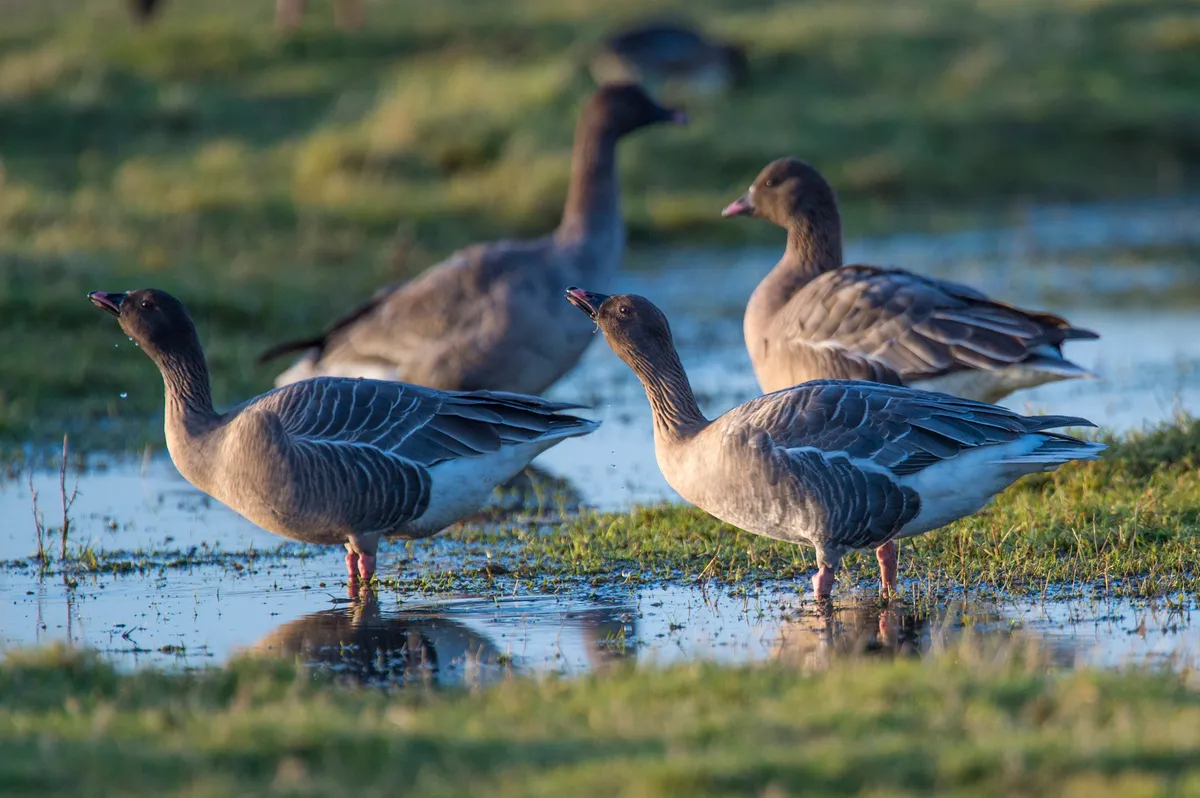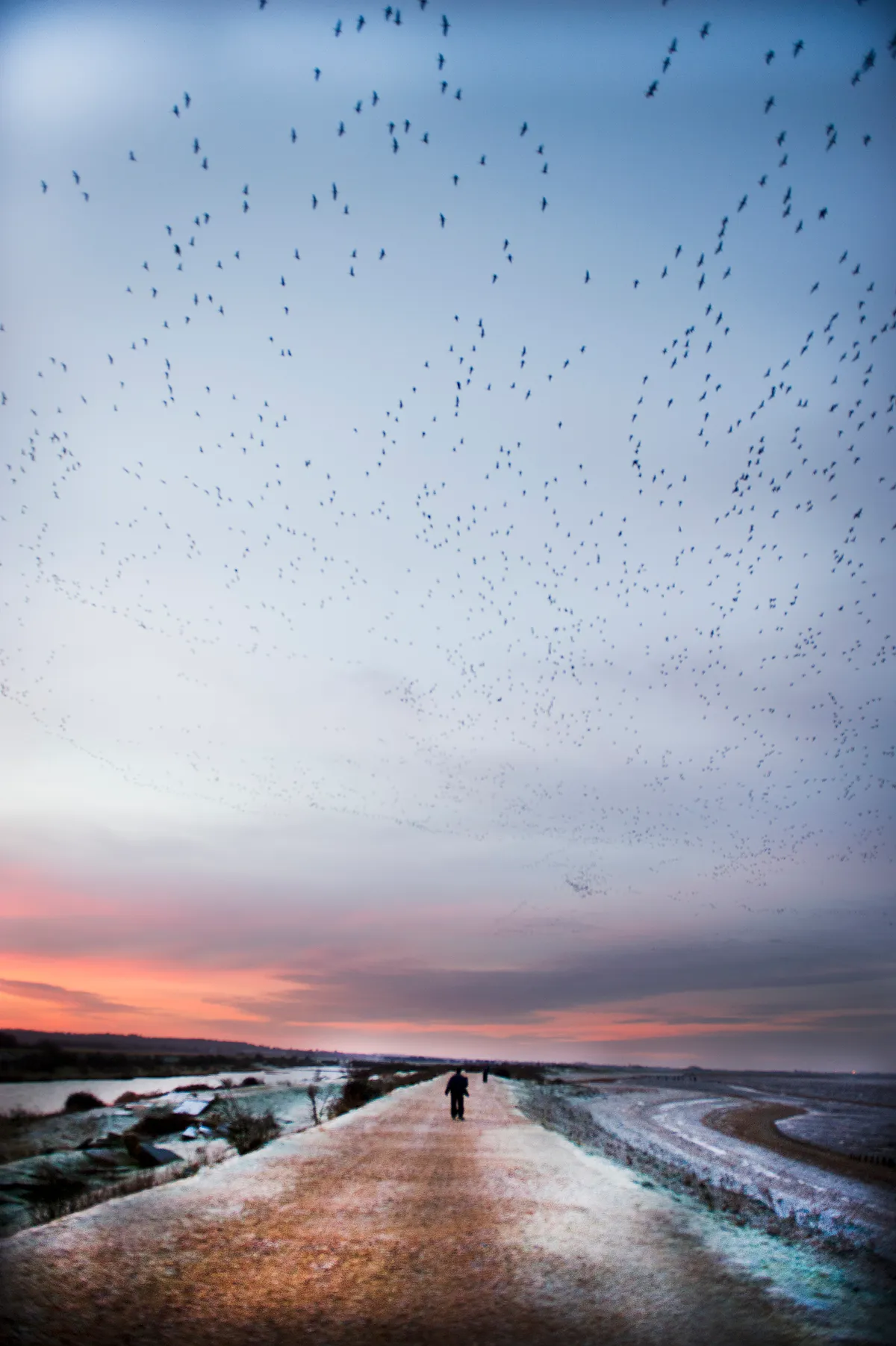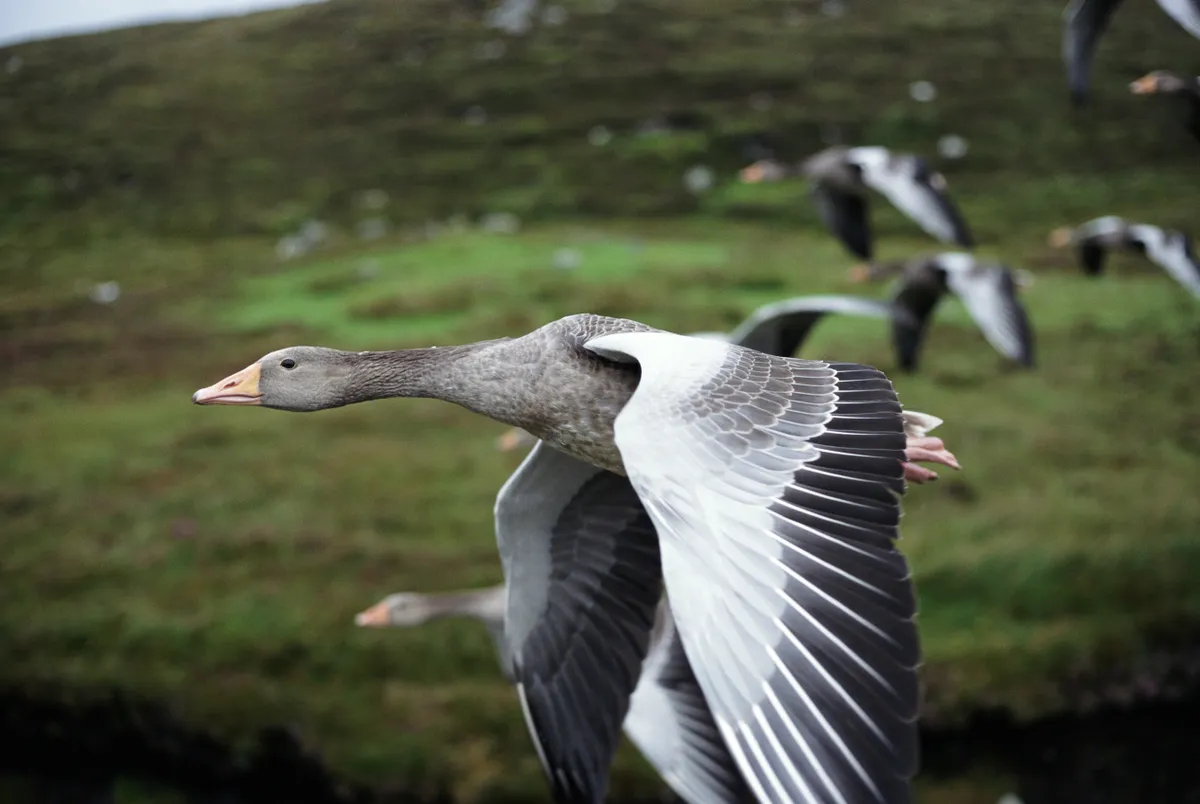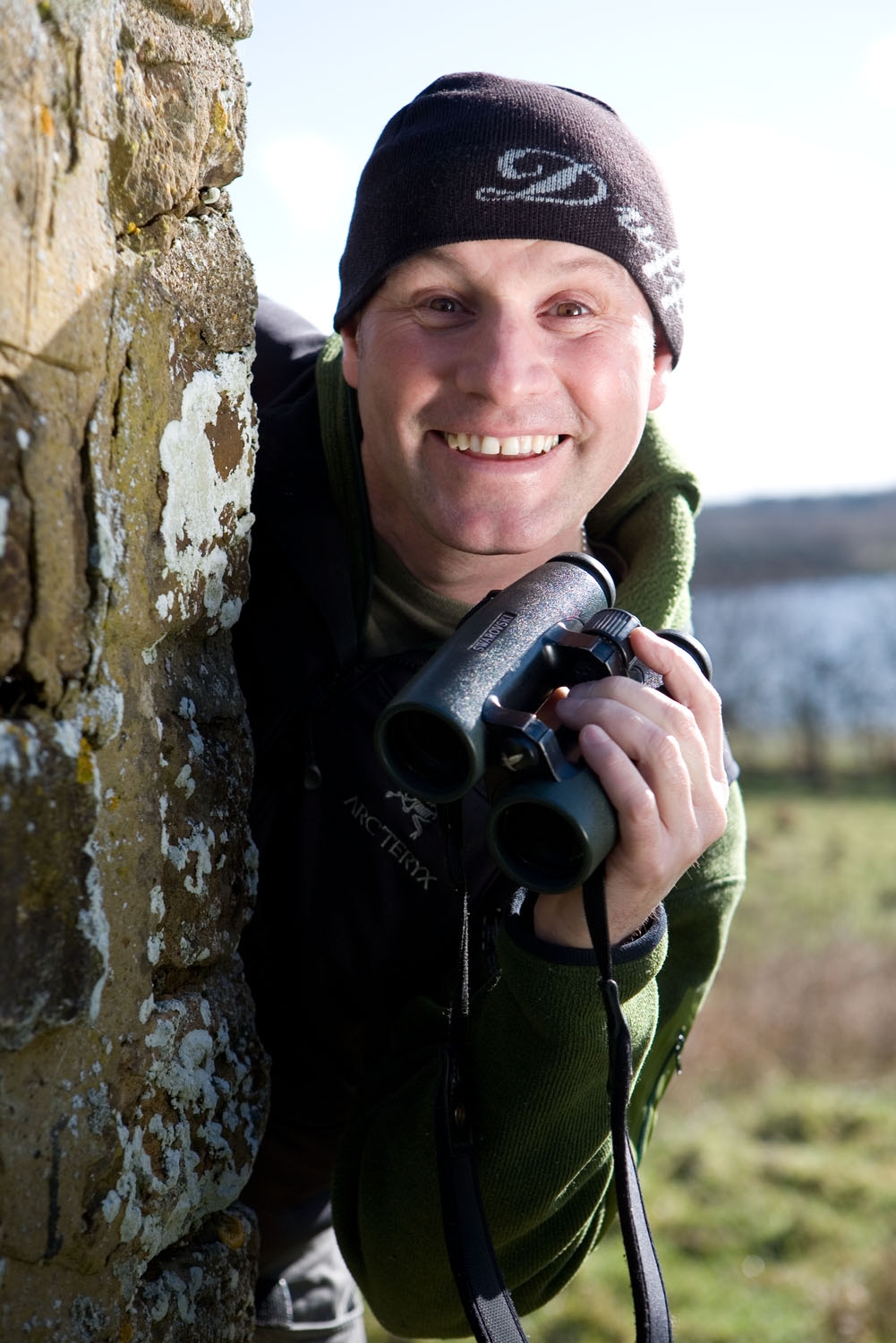In looks alone our overwintering geese are unable to compare with the elegance of say a mute swan, the brilliance of a kingfisher or the dashing nature of a peregrine. But certainly they more than make up for what could be best described as ‘unremarkable looks’ when they come together on their wintering grounds – with the whole definitely greater than the sum of its parts.

When can I see overwintering geese?
Arriving from all points north anytime from mid-September onwards, the geese are attracted to Britain’s comparatively mild winter climate, which is believed to be boosted by about 5 ̊C, thanks to the warming impact of the Gulf Stream.
An undoubted natural joy, as autumn hands over the baton to winter, comes from watching the movements of large skeins of pink- footed, white-fronted and greylag geese etched across the sky, as they shuttle between their roosting grounds and feeding areas.

Where are the best places to look for overwintering geese?
Often choosing to roost at night in the comparative safety offered by estuaries, these ‘grey’ geese will often move inland at first light to feed, which in the case of pink- footed geese sees them moving to barley or sugar-beet fields, where the crop stubble or remaining beet-tops offer rich pickings. The geese tend to then return to their roosts before dusk descends – these are the best times to catch the astonishingly aerobatic spectacle of ‘whiffling’.

What is 'whiffling'?
A term relatively unknown outside of ornithological circles, whiffling describes the geese’s technique for rapidly descending out of the sky with a zig-zagging and side-slipping motion which allows them to effectively ‘spill’ the air out of their wings.
When whiffling, the geese are even capable of flying briefly with their body, wings and feet upside down, but bizarrely with their head and neck twisted 180° around to the normal position. By briefly inverting, this temporarily reverses the aerodynamic normally associated with lift and causes the geese instead to plummet towards the ground like a stone. But often, just as quickly as they have inverted, the geese will then right themselves into their normal flying orientation, which operates like a brake as they restore gliding at a lower level.
It’s thought that the whiffling may prevent a long, slow descent along a more predictable flight line (like when a plane comes in to land), thereby making them a moving target and difficult to take aim at.
This whiffling motion can almost resemble that of a falling leaf, and is believed to be used to avoid being attacked by avian predators at a potentially vulnerable moment. Additionally, in areas where geese are shot at by hunters, it’s thought that the whiffling may prevent a long, slow descent along a more predictable flight line (like when a plane comes in to land), thereby making them a moving target and difficult to take aim at. Finally, the whiffling might also help to control their descent in particularly windy conditions.
The whiffling tends to be most commonly observed when the geese are no more than 20 or 30m above the ground, and the collective sight of geese apparently tumbling out of the sky can appear almost as uncontrolled as it is awe-inspiring.
However, having the head maintained in the usual horizontal plane presumably helps them maintain control. Researchers looked at how the geese manage to stabilise their heads during these descents and discovered that they keep them level with the help of a large number of vertebrae and complex musculature in their necks. These function in a similar manner to the spring-mass- damper system in a car’s suspension.
Discover more Wildlife Spectacles:
Top tips for getting a good view
Geese are nervous by nature and prefer open areas offering good all-round visibility, which allows them to spot any potential predators, so approaching them requires an element of caution. This means your best chance of observing whiffling geese is either from a distance (with the help of a telescope) or by using any available cover.
Cars, for example, are very effective as mobile hides, or if you are on foot, then try breaking up your outline at the base of a hedge or wall. A wild goose chase is in no one’s interest!
More wildlife spotting tips
Main image: A feeding flock of pink-footed geese taking off at sunset to roost elsewhere. © Mike Powles/Getty
